Microsoft Sharepoint
- August 6, 2013
- 8 replies
- 93 views
- Participant
- 2 replies
Best answer by davideagle
Thanks for the suggestions all. This kind of file copy is not quite as simple as a standard directory file copy @Mark2AtSafe. A batch approach might be possible be we also need to do deduplication and update other file metadata, so want to try to get FME to do the job @marko. We have however got a proof of concept up and running with a lot of trial and error using the XMLTemplater and the SoapSender... so fingers crossed.
It may be an old question, an answered question, an implemented idea, or a notification-only post.
Please check post dates before relying on any information in a question or answer.
For follow-up or related questions, please post a new question or idea.
If there is a genuine update to be made, please contact us and request that the post is reopened.
8 replies
- Contributor
- 578 replies
- February 17, 2016
I've also seen this requirement very recently where a customer is planning a data migration from one document management system to Sharepoint. At the moment we are looking at what options there are to use FME to do this via the Sharepoint Web Service. There are 4 million documents to migrate, which is far too much for CTRL-X and CTRL-V!
Has anyone done this via FME?
 +5
+5- 68 replies
- February 18, 2016
I've also seen this requirement very recently where a customer is planning a data migration from one document management system to Sharepoint. At the moment we are looking at what options there are to use FME to do this via the Sharepoint Web Service. There are 4 million documents to migrate, which is far too much for CTRL-X and CTRL-V!
Has anyone done this via FME?
Would a batch file in windows be easier to copy all the data up?
- Safer
- 2547 replies
- February 18, 2016
I'm not sure how a Sharepoint load works but, in general, to move/copy files use the Directory and File Pathnames reader (to get a list of files) and the File Copy writer (to move them).
- Contributor
- 578 replies
- Best Answer
- February 18, 2016
Thanks for the suggestions all. This kind of file copy is not quite as simple as a standard directory file copy @Mark2AtSafe. A batch approach might be possible be we also need to do deduplication and update other file metadata, so want to try to get FME to do the job @marko. We have however got a proof of concept up and running with a lot of trial and error using the XMLTemplater and the SoapSender... so fingers crossed.
- Contributor
- 61 replies
- September 30, 2016
Thanks for the suggestions all. This kind of file copy is not quite as simple as a standard directory file copy @Mark2AtSafe. A batch approach might be possible be we also need to do deduplication and update other file metadata, so want to try to get FME to do the job @marko. We have however got a proof of concept up and running with a lot of trial and error using the XMLTemplater and the SoapSender... so fingers crossed.
Hi @1spatialdave,
I'm looking to do the same thing. Are you able to share your workbench?
or describe your solution a little more detail?
I'm currently stuck with SP2010, so I think will need to use the copy.asmx web service somehow.
Nick
- Contributor
- 119 replies
- September 30, 2016
Hi Nick
For a quick reference, you can upload documents by sending a SOAP message to the CopyIntoItem method of copy.asmx.
I build up the SOAP message using XMLTemplater.An example ROOT Template:
<s:Envelope xmlns:s="http://schemas.xmlsoap.org/soap/envelope/">
<s:Body xmlns:xsi="http://www.w3.org/2001/XMLSchema-instance" xmlns:xsd="http://www.w3.org/2001/XMLSchema">
<CopyIntoItems xmlns="http://schemas.microsoft.com/sharepoint/soap/">
<SourceUrl>nothing</SourceUrl>
<DestinationUrls>
<string>$(SP_SITE){fme:get-attribute("SP_list_root_folder")}{fme:get-attribute("SP_path")}</string>
<string>$(SP_SITE){fme:get-attribute("SP_list_root_folder")}{fme:get-attribute("SP_path2")}</string>
</DestinationUrls>
<Fields>
<FieldInformation Type="Text" DisplayName="Surname" Value="Smith" />
<FieldInformation Type="DateTime" DisplayName="Date of Birth" Value="1965-11-03" />
</Fields>
<Stream>{fme:get-attribute("document_base64_encoded")}</Stream>
</CopyIntoItems>
</s:Body>
</s:Envelope>
$(SP_SITE) is an example for workspace parameter and {fme:get-attribute("SP_list_root_folder")} for an attribute.
There are 4 important bits:
- <DestinationUrls>
You need the full protocol://server/list_root_folder/SP_path/document.ext URL where you want the document to upload.
The folder must exist on SharePoint
You can upload the document to multiple destinations.
You can upload the document to the same server where the copy.asmx rwsides only. - <Stream>
base64 encoded content of the document. I could upload documents up to 40 MB. It is worth to restrict the size because large documents can make the workspace stall. - <Fields>
Optionally you can set metadata.
The Type and DisplayName should match. (There is another request that reveals what metadata exist in the list.)
DateTime values should be in ISO format.
The contents of <SourceUrl> is indifferent but cannot be empty (I don't know why)
You can use the HTTPCaller transformer to send the message to the web service:
Request URL: protocol://yoursharepointserver/_vti_bin/copy.asmx
HTTP Method: POST
You need to add a header (SOAP method to call) in the Headers section :
Name: SOAPAction
Value: http://schemas.microsoft.com/sharepoint/soap/CopyIntoItems
In Body section:
Upload Data: Specify Upload Body
Upload Body: set the Result Attribute of the XMLTemplater
Content Type: text/xml
Base64 encoding the document content is quite easy:
- AttributeFileReader transformer: set the Source File Character Encoding to Binary (FME-binary)
- BinaryEncoder transformer: Encoding Type: Base64
I created a CSV with the document source file path, SharePoint URL and optionally metadata columns. that drive the upload.
In theory the workspace is straightforward: CSV reader -> AttributeFileReader -> BinaryEncoder -> XMLTemplater -> HTTPCaller -> AttributeRemover -> Inspector
There are a few possible problems: missing or unreadable source file, large file, invalid characters in filename (SharePoint is more restrictive than tile system), ...
Another thing, proper attribute display names and types:
Send a request to
Request URL: protocol://yoursharepointserver/_vti_bin/lists.asmx
Headers:
Name: SOAPAction
Value: http://schemas.microsoft.com/sharepoint/soap/GetList
Body:
<Envelope xmlns="http://schemas.xmlsoap.org/soap/envelope/">
<Body>
<GetList xmlns="http://schemas.microsoft.com/sharepoint/soap/">
<listName>$(SP_LIST_NAME)</listName>
</GetList>
</Body>
</Envelope>
The XML response will contain Type, DisplayName, .. of all attributes.
My workspaces are a bit specific and big but if there is any interest I can get rid of the unnecessary bits and upload.
Hope it helps.
- Contributor
- 61 replies
- September 30, 2016
Hi Nick
For a quick reference, you can upload documents by sending a SOAP message to the CopyIntoItem method of copy.asmx.
I build up the SOAP message using XMLTemplater.An example ROOT Template:
<s:Envelope xmlns:s="http://schemas.xmlsoap.org/soap/envelope/">
<s:Body xmlns:xsi="http://www.w3.org/2001/XMLSchema-instance" xmlns:xsd="http://www.w3.org/2001/XMLSchema">
<CopyIntoItems xmlns="http://schemas.microsoft.com/sharepoint/soap/">
<SourceUrl>nothing</SourceUrl>
<DestinationUrls>
<string>$(SP_SITE){fme:get-attribute("SP_list_root_folder")}{fme:get-attribute("SP_path")}</string>
<string>$(SP_SITE){fme:get-attribute("SP_list_root_folder")}{fme:get-attribute("SP_path2")}</string>
</DestinationUrls>
<Fields>
<FieldInformation Type="Text" DisplayName="Surname" Value="Smith" />
<FieldInformation Type="DateTime" DisplayName="Date of Birth" Value="1965-11-03" />
</Fields>
<Stream>{fme:get-attribute("document_base64_encoded")}</Stream>
</CopyIntoItems>
</s:Body>
</s:Envelope>
$(SP_SITE) is an example for workspace parameter and {fme:get-attribute("SP_list_root_folder")} for an attribute.
There are 4 important bits:
- <DestinationUrls>
You need the full protocol://server/list_root_folder/SP_path/document.ext URL where you want the document to upload.
The folder must exist on SharePoint
You can upload the document to multiple destinations.
You can upload the document to the same server where the copy.asmx rwsides only. - <Stream>
base64 encoded content of the document. I could upload documents up to 40 MB. It is worth to restrict the size because large documents can make the workspace stall. - <Fields>
Optionally you can set metadata.
The Type and DisplayName should match. (There is another request that reveals what metadata exist in the list.)
DateTime values should be in ISO format.
The contents of <SourceUrl> is indifferent but cannot be empty (I don't know why)
You can use the HTTPCaller transformer to send the message to the web service:
Request URL: protocol://yoursharepointserver/_vti_bin/copy.asmx
HTTP Method: POST
You need to add a header (SOAP method to call) in the Headers section :
Name: SOAPAction
Value: http://schemas.microsoft.com/sharepoint/soap/CopyIntoItems
In Body section:
Upload Data: Specify Upload Body
Upload Body: set the Result Attribute of the XMLTemplater
Content Type: text/xml
Base64 encoding the document content is quite easy:
- AttributeFileReader transformer: set the Source File Character Encoding to Binary (FME-binary)
- BinaryEncoder transformer: Encoding Type: Base64
I created a CSV with the document source file path, SharePoint URL and optionally metadata columns. that drive the upload.
In theory the workspace is straightforward: CSV reader -> AttributeFileReader -> BinaryEncoder -> XMLTemplater -> HTTPCaller -> AttributeRemover -> Inspector
There are a few possible problems: missing or unreadable source file, large file, invalid characters in filename (SharePoint is more restrictive than tile system), ...
Another thing, proper attribute display names and types:
Send a request to
Request URL: protocol://yoursharepointserver/_vti_bin/lists.asmx
Headers:
Name: SOAPAction
Value: http://schemas.microsoft.com/sharepoint/soap/GetList
Body:
<Envelope xmlns="http://schemas.xmlsoap.org/soap/envelope/">
<Body>
<GetList xmlns="http://schemas.microsoft.com/sharepoint/soap/">
<listName>$(SP_LIST_NAME)</listName>
</GetList>
</Body>
</Envelope>
The XML response will contain Type, DisplayName, .. of all attributes.
My workspaces are a bit specific and big but if there is any interest I can get rid of the unnecessary bits and upload.
Hope it helps.
I had most of it after discovering the wsdl endpoint, however i didn't have the SOAPAction header.
I do have a small bug where if i try to write a feature to a logger that includes my endocded doc, fme just stalls. remove to loggers, and it runs smoothly, very odd. I'm working in fme 2015.0, as i'm looking to deploy to that version of server, I suspect it'll be a bug that's fixed in 2016.
many thanks.
Nick
- Contributor
- 578 replies
- July 31, 2020
Just dropping an additional contribution to this thread should anyone find it. We're expecting a Sharepoint 'package' to land in the next few weeks from the good people at Safe that will include the ability to access formats supported by FME directly on Sharepoint via a web connection as well as a dedicated SharepointConnector Transformer. I believe there will be many very happy people 😀 .
I've also seen this requirement very recently where a customer is planning a data migration from one document management system to Sharepoint. At the moment we are looking at what options there are to use FME to do this via the Sharepoint Web Service. There are 4 million documents to migrate, which is far too much for CTRL-X and CTRL-V!
Has anyone done this via FME?
I've also seen this requirement very recently where a customer is planning a data migration from one document management system to Sharepoint. At the moment we are looking at what options there are to use FME to do this via the Sharepoint Web Service. There are 4 million documents to migrate, which is far too much for CTRL-X and CTRL-V!
Has anyone done this via FME?
Would a batch file in windows be easier to copy all the data up?
I'm not sure how a Sharepoint load works but, in general, to move/copy files use the Directory and File Pathnames reader (to get a list of files) and the File Copy writer (to move them).
Thanks for the suggestions all. This kind of file copy is not quite as simple as a standard directory file copy @Mark2AtSafe. A batch approach might be possible be we also need to do deduplication and update other file metadata, so want to try to get FME to do the job @marko. We have however got a proof of concept up and running with a lot of trial and error using the XMLTemplater and the SoapSender... so fingers crossed.
Thanks for the suggestions all. This kind of file copy is not quite as simple as a standard directory file copy @Mark2AtSafe. A batch approach might be possible be we also need to do deduplication and update other file metadata, so want to try to get FME to do the job @marko. We have however got a proof of concept up and running with a lot of trial and error using the XMLTemplater and the SoapSender... so fingers crossed.
Hi @1spatialdave,
I'm looking to do the same thing. Are you able to share your workbench?
or describe your solution a little more detail?
I'm currently stuck with SP2010, so I think will need to use the copy.asmx web service somehow.
Nick
Hi Nick
For a quick reference, you can upload documents by sending a SOAP message to the CopyIntoItem method of copy.asmx.
I build up the SOAP message using XMLTemplater.An example ROOT Template:
<s:Envelope xmlns:s="http://schemas.xmlsoap.org/soap/envelope/">
<s:Body xmlns:xsi="http://www.w3.org/2001/XMLSchema-instance" xmlns:xsd="http://www.w3.org/2001/XMLSchema">
<CopyIntoItems xmlns="http://schemas.microsoft.com/sharepoint/soap/">
<SourceUrl>nothing</SourceUrl>
<DestinationUrls>
<string>$(SP_SITE){fme:get-attribute("SP_list_root_folder")}{fme:get-attribute("SP_path")}</string>
<string>$(SP_SITE){fme:get-attribute("SP_list_root_folder")}{fme:get-attribute("SP_path2")}</string>
</DestinationUrls>
<Fields>
<FieldInformation Type="Text" DisplayName="Surname" Value="Smith" />
<FieldInformation Type="DateTime" DisplayName="Date of Birth" Value="1965-11-03" />
</Fields>
<Stream>{fme:get-attribute("document_base64_encoded")}</Stream>
</CopyIntoItems>
</s:Body>
</s:Envelope>
$(SP_SITE) is an example for workspace parameter and {fme:get-attribute("SP_list_root_folder")} for an attribute.
There are 4 important bits:
- <DestinationUrls>
You need the full protocol://server/list_root_folder/SP_path/document.ext URL where you want the document to upload.
The folder must exist on SharePoint
You can upload the document to multiple destinations.
You can upload the document to the same server where the copy.asmx rwsides only. - <Stream>
base64 encoded content of the document. I could upload documents up to 40 MB. It is worth to restrict the size because large documents can make the workspace stall. - <Fields>
Optionally you can set metadata.
The Type and DisplayName should match. (There is another request that reveals what metadata exist in the list.)
DateTime values should be in ISO format.
The contents of <SourceUrl> is indifferent but cannot be empty (I don't know why)
You can use the HTTPCaller transformer to send the message to the web service:
Request URL: protocol://yoursharepointserver/_vti_bin/copy.asmx
HTTP Method: POST
You need to add a header (SOAP method to call) in the Headers section :
Name: SOAPAction
Value: http://schemas.microsoft.com/sharepoint/soap/CopyIntoItems
In Body section:
Upload Data: Specify Upload Body
Upload Body: set the Result Attribute of the XMLTemplater
Content Type: text/xml
Base64 encoding the document content is quite easy:
- AttributeFileReader transformer: set the Source File Character Encoding to Binary (FME-binary)
- BinaryEncoder transformer: Encoding Type: Base64
I created a CSV with the document source file path, SharePoint URL and optionally metadata columns. that drive the upload.
In theory the workspace is straightforward: CSV reader -> AttributeFileReader -> BinaryEncoder -> XMLTemplater -> HTTPCaller -> AttributeRemover -> Inspector
There are a few possible problems: missing or unreadable source file, large file, invalid characters in filename (SharePoint is more restrictive than tile system), ...
Another thing, proper attribute display names and types:
Send a request to
Request URL: protocol://yoursharepointserver/_vti_bin/lists.asmx
Headers:
Name: SOAPAction
Value: http://schemas.microsoft.com/sharepoint/soap/GetList
Body:
<Envelope xmlns="http://schemas.xmlsoap.org/soap/envelope/">
<Body>
<GetList xmlns="http://schemas.microsoft.com/sharepoint/soap/">
<listName>$(SP_LIST_NAME)</listName>
</GetList>
</Body>
</Envelope>
The XML response will contain Type, DisplayName, .. of all attributes.
My workspaces are a bit specific and big but if there is any interest I can get rid of the unnecessary bits and upload.
Hope it helps.
Hi Nick
For a quick reference, you can upload documents by sending a SOAP message to the CopyIntoItem method of copy.asmx.
I build up the SOAP message using XMLTemplater.An example ROOT Template:
<s:Envelope xmlns:s="http://schemas.xmlsoap.org/soap/envelope/">
<s:Body xmlns:xsi="http://www.w3.org/2001/XMLSchema-instance" xmlns:xsd="http://www.w3.org/2001/XMLSchema">
<CopyIntoItems xmlns="http://schemas.microsoft.com/sharepoint/soap/">
<SourceUrl>nothing</SourceUrl>
<DestinationUrls>
<string>$(SP_SITE){fme:get-attribute("SP_list_root_folder")}{fme:get-attribute("SP_path")}</string>
<string>$(SP_SITE){fme:get-attribute("SP_list_root_folder")}{fme:get-attribute("SP_path2")}</string>
</DestinationUrls>
<Fields>
<FieldInformation Type="Text" DisplayName="Surname" Value="Smith" />
<FieldInformation Type="DateTime" DisplayName="Date of Birth" Value="1965-11-03" />
</Fields>
<Stream>{fme:get-attribute("document_base64_encoded")}</Stream>
</CopyIntoItems>
</s:Body>
</s:Envelope>
$(SP_SITE) is an example for workspace parameter and {fme:get-attribute("SP_list_root_folder")} for an attribute.
There are 4 important bits:
- <DestinationUrls>
You need the full protocol://server/list_root_folder/SP_path/document.ext URL where you want the document to upload.
The folder must exist on SharePoint
You can upload the document to multiple destinations.
You can upload the document to the same server where the copy.asmx rwsides only. - <Stream>
base64 encoded content of the document. I could upload documents up to 40 MB. It is worth to restrict the size because large documents can make the workspace stall. - <Fields>
Optionally you can set metadata.
The Type and DisplayName should match. (There is another request that reveals what metadata exist in the list.)
DateTime values should be in ISO format.
The contents of <SourceUrl> is indifferent but cannot be empty (I don't know why)
You can use the HTTPCaller transformer to send the message to the web service:
Request URL: protocol://yoursharepointserver/_vti_bin/copy.asmx
HTTP Method: POST
You need to add a header (SOAP method to call) in the Headers section :
Name: SOAPAction
Value: http://schemas.microsoft.com/sharepoint/soap/CopyIntoItems
In Body section:
Upload Data: Specify Upload Body
Upload Body: set the Result Attribute of the XMLTemplater
Content Type: text/xml
Base64 encoding the document content is quite easy:
- AttributeFileReader transformer: set the Source File Character Encoding to Binary (FME-binary)
- BinaryEncoder transformer: Encoding Type: Base64
I created a CSV with the document source file path, SharePoint URL and optionally metadata columns. that drive the upload.
In theory the workspace is straightforward: CSV reader -> AttributeFileReader -> BinaryEncoder -> XMLTemplater -> HTTPCaller -> AttributeRemover -> Inspector
There are a few possible problems: missing or unreadable source file, large file, invalid characters in filename (SharePoint is more restrictive than tile system), ...
Another thing, proper attribute display names and types:
Send a request to
Request URL: protocol://yoursharepointserver/_vti_bin/lists.asmx
Headers:
Name: SOAPAction
Value: http://schemas.microsoft.com/sharepoint/soap/GetList
Body:
<Envelope xmlns="http://schemas.xmlsoap.org/soap/envelope/">
<Body>
<GetList xmlns="http://schemas.microsoft.com/sharepoint/soap/">
<listName>$(SP_LIST_NAME)</listName>
</GetList>
</Body>
</Envelope>
The XML response will contain Type, DisplayName, .. of all attributes.
My workspaces are a bit specific and big but if there is any interest I can get rid of the unnecessary bits and upload.
Hope it helps.
I had most of it after discovering the wsdl endpoint, however i didn't have the SOAPAction header.
I do have a small bug where if i try to write a feature to a logger that includes my endocded doc, fme just stalls. remove to loggers, and it runs smoothly, very odd. I'm working in fme 2015.0, as i'm looking to deploy to that version of server, I suspect it'll be a bug that's fixed in 2016.
many thanks.
Nick
Just dropping an additional contribution to this thread should anyone find it. We're expecting a Sharepoint 'package' to land in the next few weeks from the good people at Safe that will include the ability to access formats supported by FME directly on Sharepoint via a web connection as well as a dedicated SharepointConnector Transformer. I believe there will be many very happy people 😀 .
Related Topics
7.1 Surround Sound Activation - Code Invalidicon
Razer Support7.1 Surround Sound activation code is invalid even though I just got the code.
Razer SupportRazer Blackshark V2 X registered, but 7.1 surround sound activation code is invalidicon
Razer Support7.1 Surround Sound Activation Code Invalid
Razer Support7.1 Surround sound activation code invalid
Razer Support
Helpful Members This Week
- takashi
29 votes
- hkingsbury
15 votes
- virtualcitymatt
11 votes
- redgeographics
9 votes
- jdh
9 votes
- alexbiz
8 votes
- ebygomm
8 votes
- nielsgerrits
8 votes
- tomf
7 votes
- martinkoch
6 votes
Community Stats
- 31,853
- Posts
- 120,982
- Replies
- 39,485
- Members
Latest FME
Enter your E-mail address. We'll send you an e-mail with instructions to reset your password.
Scanning file for viruses.
Sorry, we're still checking this file's contents to make sure it's safe to download. Please try again in a few minutes.
OKThis file cannot be downloaded
Sorry, our virus scanner detected that this file isn't safe to download.
OKCookie policy
We use cookies to enhance and personalize your experience. If you accept you agree to our full cookie policy. Learn more about our cookies.
Cookie settings
We use 3 different kinds of cookies. You can choose which cookies you want to accept. We need basic cookies to make this site work, therefore these are the minimum you can select. Learn more about our cookies.


















